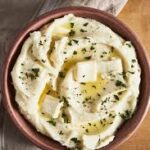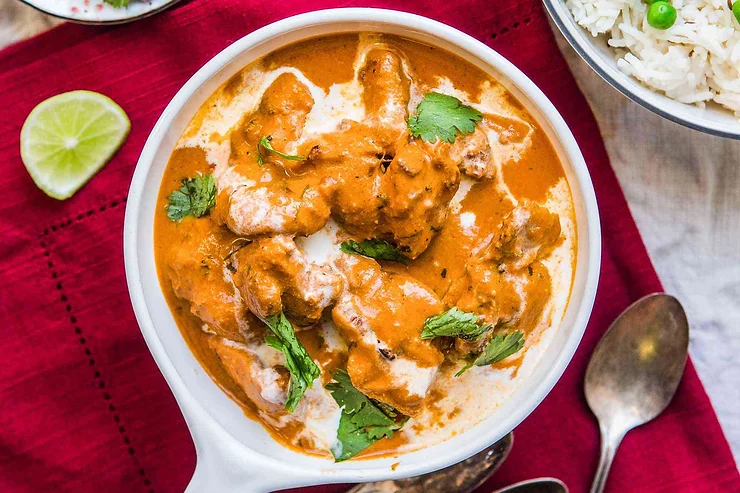Introduction
American food history which is as enticing as it is accessible to people of the world. Starting with its roots from a simple ground beef sandwiched between two bun, the hamburger has expanded with various creative flavors that can be incorporated with the simple burger.
As a food that can be eaten at a backyard barbeque or a restaurant or even a gourmet restaurant the hamburger is a food that is well known and can be prepared in a way that will suit everyone’s palate. Here in this article we shall take a closer look at the evolution of the hamburger, how it became an international delicacy as well as the different ways in which meat can be concocted.
Origins of the Hamburger
The origins of hamburgers are still unknown due to numerous legends which have been told about this dish. Nevertheless, one could follow the beginnings of one of today’s major railway networks back to 19th century Germany, to be more precise, to Hamburg.
To that list, German immigrants introduced a ‘Hamburg steak’ which was a chopped beef steak that could be barbecued or pan fried. It is from this dish that the modern hamburger was developed and this was seen in the United States. The earliest known sandwich was the hamburger sandwich and this was served in a bun in the latter half of the nineteenth century.
There are several American vendors who lay the claim of having developed the hamburger to what we know today, however there is one that seems to be well grounded and that is the story of Charlie Nagreen who in the year 1885 created the hamburger by flattening a meatball and placing it between two pieces of bread so as to have a sandwich that could be eaten while standing. There was a demand for this innovation and by the beginning of twentieth century, hamburger began to form part of the American diet.
Rise of the Hamburger: From Roadside Stands to Fast Food Giants
This food was consumed widely in the twentieth century, mainly due to fast foods’ appearance on the market. In 1921 White Castle opened its first restaurant in Wichita Kansas, and the small square hamburgers that were produced sold for five cents each. Thus, thanks to White Castle, a hamburger became easy to buy, cheap, convenient and tasted good for the working population.
Starting in 1948, the McDonalds’ brothers brought into the scene the “Speedee Service System” this approach fast-tracked the preparation of hamburgers and others. It is because of this system that the fast food industry was able to come into what it is today and also making McDonald one of the most recognized and well established brands in the world.
Today it is nearly impossible to find a place where the hamburger is not known or at least tried because it is one of the most popular fast foods that has become a logo of globalization. Standards range from the simple cheese burger and other conventional varieties of Hawkins to fancier ones including avocado, pineapple or foie gras among others.
Anatomy of a Perfect Hamburger
These have been the biggest reasons and it has been said and agreed by many that making the perfect hamburger is a science, as well as an art. While there are endless variations, a great hamburger typically consists of a few key components: the patty, the bun, the toppings and the garnishes are all parts of the burger. Let’s break down each element:Let’s discuss each of the components in detail:
The Patty: The middle that is most crucial to any sort of hamburger is how the patty is made. Among the favourite types of meat people prefer, beef is followed by turkey, then chicken, mutton and those prepared from vegetable proteins. The best way to obtain a palatable burger and which one is most certainly a juicy patty is the correct balance of fat meat.
The Bun: Ideally, it should be slightly under baked so that the bunning does not overpower the patty that it contains. For sandwich breads, brioche buns and potato rolls are easy to get and very easy to handle as opposed to the regular burger buns because of their lightness, slight sweetness and ability to hold up to the juiciness of the meat as well as other components of the sandwich without breaking apart.
The Toppings: Toppings on the other hand provides you with an opportunity to somewhat creatively express yourself. The ingredients are simply lettuce, tomatoes, onions, and pickles, but one can add anything that he or she wanted. Another indispensable product must be cheese while in choice: The type of cheese which is generally used may be replaced with cheddar, swiss or blue cheese. As for other type of food one can select bacon strips, avocado, sautèd mushroAMS and fried eggs etc.
The Condiments: The sauces can be used for instance in the making of a hamburger by improving on the taste of a tomato. Of course, the most typical ones are ketchup, mustard and mayonnaise, but it may be equally interesting to use aioli or barbecue sauce or sriracha.
However, condiments are prohibited or better still to be used sparingly in order to have a feel of the patty and the toppings.
Popular Hamburger Variations
There I went on to explain how the beauty of the hamburger is the fact that it is as universal as it is. Here are some popular variations that showcase the creativity and diversity of this beloved dish:Here are some of the most common and delicious variations that proves how versatile this dish is:
Cheeseburger: The cheese burger is the least model in which a slice of cheese is simply put on top of the patty thus making it more creamy. The cheese most preferred for melting is the American cheese, others include Cheddar, Swiss and the blue cheese.
Bacon Cheeseburger: Premium burger incorporates crispy bacon on it because the taste of smoky taste of the bacon. interacts with the delicious melted softness of cheese. Veggie Burger: There are also several good vegetable burgers: from healthy proteins are black beans, lentils or mushrooms for those who have bet against meat products. Any veggie burgers produced today bear the likeness of beef burgers so that it may appeal to the vegetarians and the vegan individuals.
Turkey Burger: Turkey burgers are not as worse for you as beef and offer a slightly less flavourful taste that can be just as good when combined with any toppings. Another component that should be taken into consideration while preparing the turkey patty is seasoning to prevent instances whereby the Patty is dry.
Sliders: As for SLIDERS it turns out to be mini hamburgers that may be given as appetizers during festivity or as starters. They do not contain some of the customary topplings and accompaniments, and while they belong to the same class of the familiar hamburgers, they are normally presented on diminutive burger bread rolls.
Regional Variations: It customarily comes in different forms to bring out the characteristic of the people in the various regions and today this food item is the hamburger.
For example, avocado and sprout are added to the California Burger while pimento cheese or fried green tomatoes become the parts of the Southern Burger. Interestingly Hawaiian traditional food is also known as Loco Moco which contains hamburger patty, rice, fried egg, and the gravy.
Hamburger in Global Cuisine
It can be said that hamburger has become an inseparable part of many national cuisines, despite the fact it is originally an American dish.
Here are some examples of how the hamburger has been reimagined in different countries:Here are some examples of how the hamburger has been reimagined in different countries: Japan: In Japan there is also the so-called “Hambāgu” which in fact do not resemble hamburgers but rather a Salisbury steak. Common are the meals which are not served with the buns like a burger but rather with rice accompanied by vegetables and a spicy sauce.
Also, the wagyu beef burgers, a fancy Japanese item is also served here …it literally melts in the mouth! Germany: There are regional variants here and in Germany for instance you will come across “Frikadelle,” which is a pan-fried ground meat patty prepared with onions and spices. It may be eaten with potatoes and on the side a slice of mustard. India: In India where the people do not freely consume beef, there are normally vegetable and chicken burgers.
The “Aloo Tikki Burger” which is a vegetarian burger made from spiced mashed potatoes formed into a patty and it is accompanied by chutney or pickled vegetables. Australia: The “Aussie Burger” is a rather big addition, which is usually made with a beef patty, bacon, cheese, lettuce, tomatoes, and a fried egg. Beetroot is also used at times, to add flavor and colour to the burger. Brazil: The favorite food of the Brazilians is “X-Burger” which is actually a cheeseburger containing ham, eggs, corns, peas and potato sticks in some outlets.
Future of the Hamburger
With new trends in foods being developed in the market the hamburger also undergoes some transformation or the other. Lately, there emerged a lot of discussions about vegan burgers, which popped up due to the concerns about one’s health, the environment, or animals. Most people who do not eat meat have shifted towards taking plant-based burgers by Beyond Meat and Impossible Foods which imitates beef burgers almost perfectly.
Environmentalism is also emerging as an important topic in the hamburger industry where the establishments and producers are looking for ways to become more sustainable. These are practices such as buying meat that is sustainable by obtaining it from farms that adopt regenerative agriculture, minimizing food wastage and using environmentally friendly packaging.
As well as these trends, specialized hamburgers are gradually proliferating and developing gourmet burgers in which chefs accompany truffles, foie gras, or cheeses of small producers in addition to the hamburger. Sometimes these gourmet creations are a little pricey, but they serve utensils that make one feel that they are specials and deserve a special treat.
Conclusion
The hamburger’s enduring popularity can be attributed to its simplicity, versatility, and ability to adapt to changing tastes and trends. Whether you prefer a classic cheeseburger, a plant-based patty, or a gourmet creation, there’s a hamburger out there for everyone.
Its global reach and cultural significance make it more than just a meal; it’s a symbol of culinary creativity and innovation. As we look to the future, the hamburger will undoubtedly continue to evolve, reflecting the diverse and dynamic nature of food culture. Whether enjoyed at a fast food joint, a high-end restaurant, or a backyard barbecue, the hamburger remains a beloved and iconic dish that brings people together around the world.











